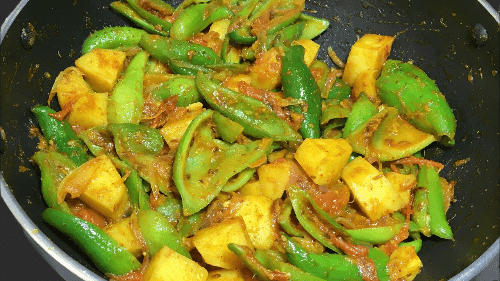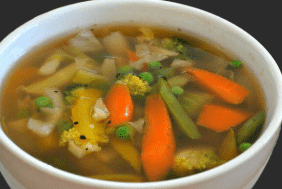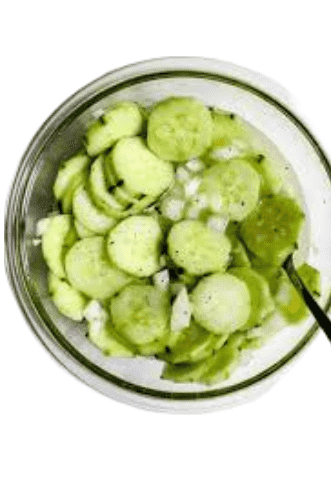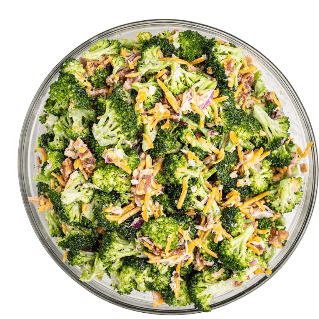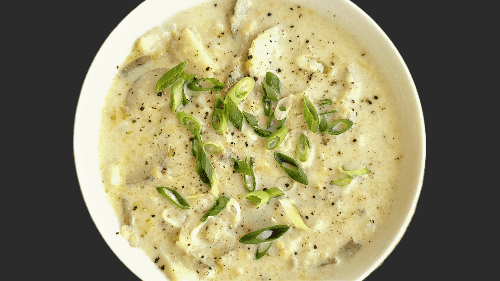Falari Aloo Ki Kadhi
Introduction :
Falari Aloo Ki Kadhi is a traditional Indian dish specifically tailored for fasting days, known as “falari” days. The word “Falari” refers to the foods that are permissible during Hindu fasting, excluding certain grains, onions, garlic, and many spices. Instead, ingredients like potatoes, peanuts, yogurt, and flours like buckwheat (kuttu) or water chestnut (singhara) are used.
The origins of Kadhi can be traced back to North India, particularly Rajasthan and Gujarat, where Kadhi is a staple part of the cuisine. However, Falari Aloo Ki Kadhi has become popular across regions due to its simplicity and fulfilling nature. This kadhi variant uses boiled potatoes instead of the traditional pakoras (fritters), making it lighter and more suited for those who are fasting.
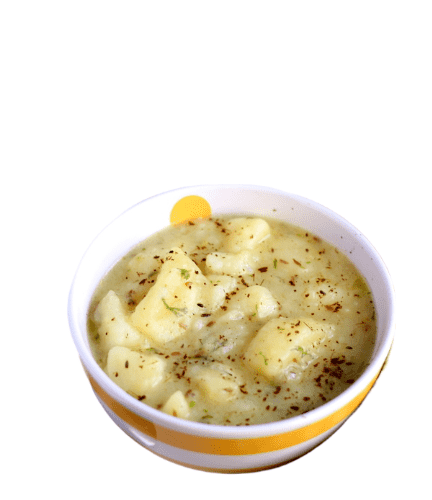
Ingredients Required :
Here’s a detailed look at the ingredients needed for Falari Aloo Ki Kadhi:
Main Ingredients:
- Potatoes (Aloo): 3 medium-sized, boiled and diced.
- Yogurt (Curd): 1 cup, whisked well to avoid lumps.
- Singhara Atta (Water Chestnut Flour) or Kuttu Atta (Buckwheat Flour): 2 tablespoons, to thicken the kadhi.
- Water: 3 cups, to adjust the consistency of the kadhi.
Spices and Seasonings:
- Cumin Seeds (Jeera): 1 teaspoon.
- Rock Salt (Sendha Namak): To taste; used in fasting recipes instead of regular salt.
- Black Pepper Powder: 1 teaspoon, for mild spiciness.
- Green Chilies: 2, slit or chopped (optional, depending on your spice preference).
- Ginger: 1 teaspoon, grated (optional, fasting norms vary by region).
- Ghee (Clarified Butter): 1 tablespoon, for tempering. You can also use oil allowed during fasting.
Garnish:
- Fresh Coriander Leaves: A handful, finely chopped (optional, as some fasting customs avoid it).
Step-by-Step Preparation :
Step-1: Preparation of Yogurt Mixture:
- Whisk the Yogurt: Take the yogurt in a large bowl and whisk it well until smooth. This helps in avoiding any lumps when the kadhi is cooked.
- Add Flour to Yogurt: Add 2 tablespoons of Singhara Atta or Kuttu Atta to the whisked yogurt. This will act as a thickening agent.
- Mix Well: Add water slowly to the yogurt mixture, whisking continuously to form a smooth, lump-free batter. Set aside.
Step-2: Cooking the Kadhi:
- Heat Ghee for Tempering: In a deep pan or kadai, heat 1 tablespoon of ghee on medium flame.
- Add Cumin Seeds: Once the ghee is hot, add cumin seeds and let them sizzle.
- Add Green Chilies and Ginger: Add green chilies and grated ginger to the tempering and sauté for a few seconds until fragrant. This step is optional, depending on fasting customs.
- Incorporate Potatoes: Add the boiled and diced potatoes to the tempering. Stir them gently to coat the potatoes with the tempering ingredients.
- Add Yogurt Mixture: Slowly pour the yogurt mixture into the pan, stirring continuously to prevent curdling. Keep the flame low to medium.
- Season with Rock Salt and Black Pepper: Add rock salt and black pepper powder to taste. Stir well.
- Simmer: Allow the kadhi to simmer on low heat for about 10-15 minutes, stirring occasionally. The kadhi will thicken as it cooks; adjust the water consistency as needed.
- Garnish and Serve: Once done, garnish with fresh coriander leaves if using. Serve hot with Samak rice (barnyard millet), rajgira roti, or enjoy it as is.
Cooking Tips and Tricks:
- Avoid Curdling: Always cook the kadhi on low to medium heat and stir continuously when adding the yogurt mixture to prevent curdling.
- Consistency Check: Kadhi tends to thicken as it cools, so keep it slightly thinner while cooking if you plan to consume it later.
- Adjust Spices for Fasting: Customize the spices based on your fasting rules. Some people avoid chilies and ginger, while others use them freely.
- Avoid Lumps: Whisk the yogurt and flour mixture thoroughly to avoid lumps in your kadhi. Using a hand blender can make this easier.
- Using Other Flours: If you don’t have Singhara or Kuttu atta, you can use Rajgira (amaranth) flour or Sabudana (tapioca) flour, but the taste may vary slightly.
Common Variations :
- Sabudana Kadhi: Replace potatoes with soaked and boiled sabudana (tapioca pearls) for a different texture and flavor.
- Paneer Addition: Adding small cubes of paneer makes the kadhi more protein-rich and creamy.
- Spicy Kadhi: If not fasting, you can add red chili powder, turmeric, or asafoetida (hing) to enhance the flavor further.
- Peanut Kadhi: Add roasted and crushed peanuts to the kadhi for a crunchy texture and nutty taste.
Nutritional Information :
Falari Aloo Ki Kadhi is a nutritious dish that provides a balanced mix of carbohydrates, proteins, and fats, making it an ideal meal for fasting days. Below is a rough nutritional breakdown per serving:
- Calories: 200-250 kcal
- Carbohydrates: 30g
- Proteins: 6g
- Fats: 10g
- Fiber: 3g
- Vitamin C: High due to potatoes
- Calcium: Good due to yogurt
This nutritional profile makes it light yet satisfying, ideal for those on a restricted diet during fasting periods.
Frequently Asked Questions (FAQs) :
Q1: Can I use regular salt instead of rock salt?
A1: If you are not fasting, regular salt can be used. However, for fasting recipes, rock salt is preferred.
Q2: How do I avoid kadhi from curdling?
A2: Always cook on low flame and keep stirring when adding the yogurt mixture. Adding a tablespoon of flour helps stabilize the yogurt.
Q3: Can this kadhi be stored for later?
A3: Yes, you can store the kadhi in the refrigerator for up to 2 days. Reheat on low flame, adding a little water if it thickens.
Q4: What can I serve with Falari Aloo Ki Kadhi?
A5: AIt pairs beautifully with Samak rice, Rajgira roti, or simply on its own as a light meal.
Read More : Banana Walnut Lassi
Conclusion :
Falari Aloo Ki Kadhi is more than just a fasting dish—it’s a wholesome, delicious meal that offers comfort and nutrition in every bite. Its tangy, mildly spiced flavor with the softness of potatoes makes it a go-to choice, even beyond fasting days. Whether you’re observing fasts or looking for a light meal, this kadhi is a perfect blend of tradition, taste, and nutrition.
So, next time you’re preparing a fasting menu, try this Falari Aloo Ki Kadhi recipe, and you’ll discover why it remains a favorite across Indian households. Enjoy the simplicity of flavors and the joy of a dish that’s truly soulful!

